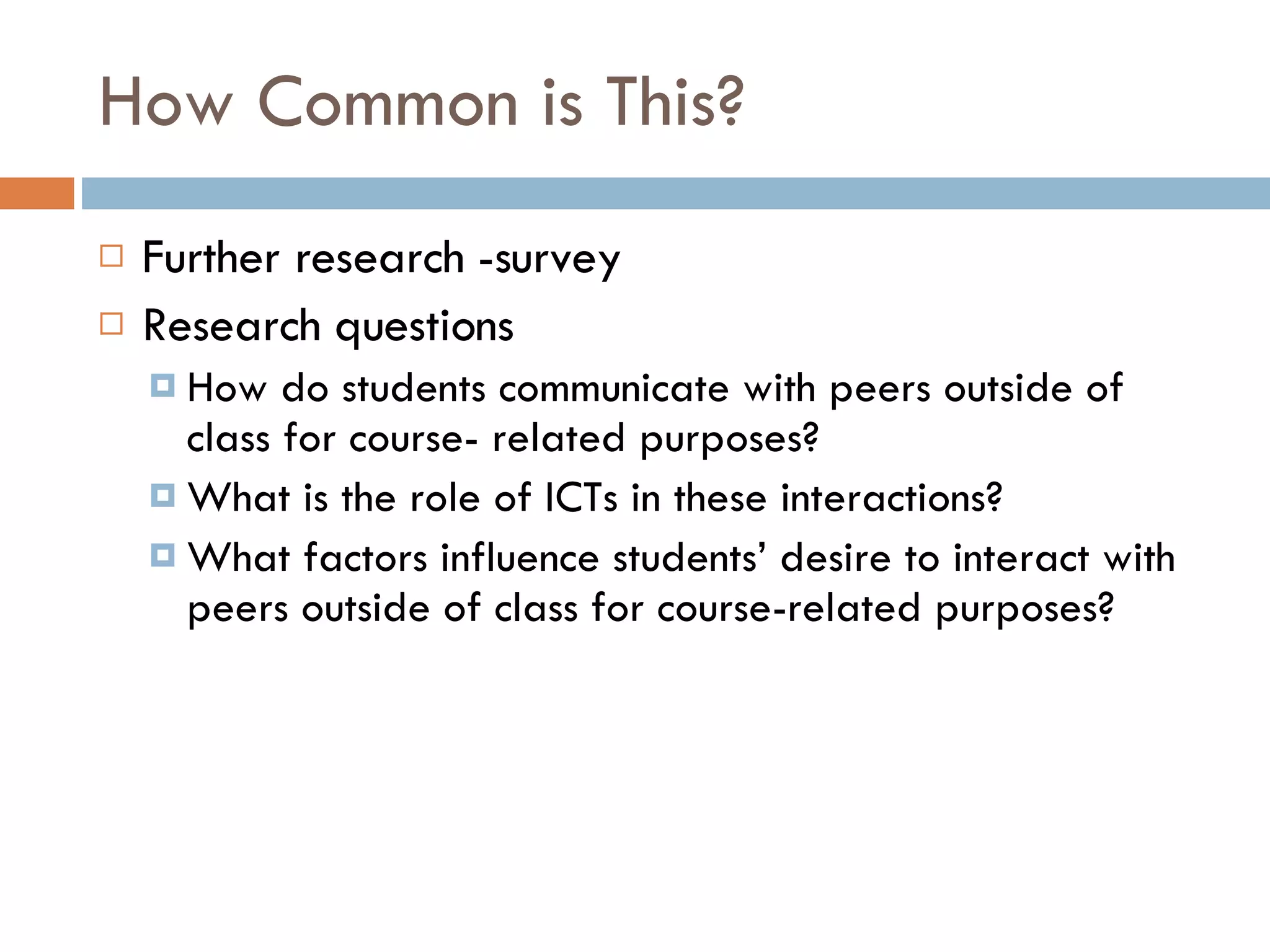The document summarizes research on how students at BCIT interact with peers outside of class for course-related purposes and how information and communication technologies (ICTs) affect this. Key findings include:
1) Students used a limited set of familiar communication channels like Facebook, email, texting to interact with peers, driven more by convenience than their status as "digital natives".
2) ICTs were not the primary reason for peer interactions, which were motivated more by seeking practical solutions to course issues.
3) Student use of ICTs did not necessarily reflect characteristics of "digital learner" profiles and was not deeply tied to their age as "net generation" learners.





















